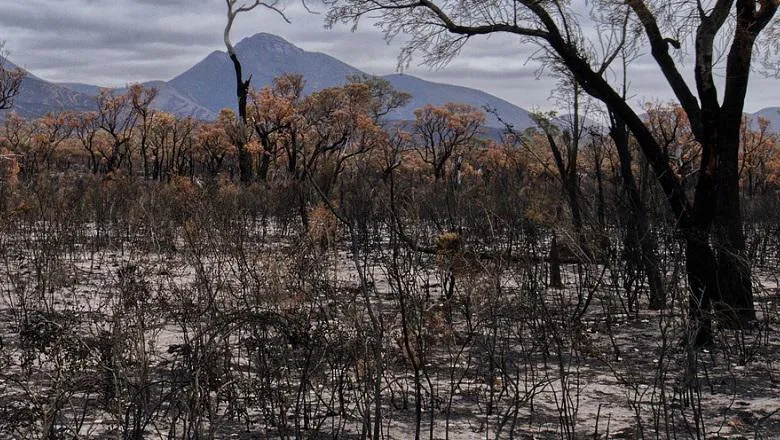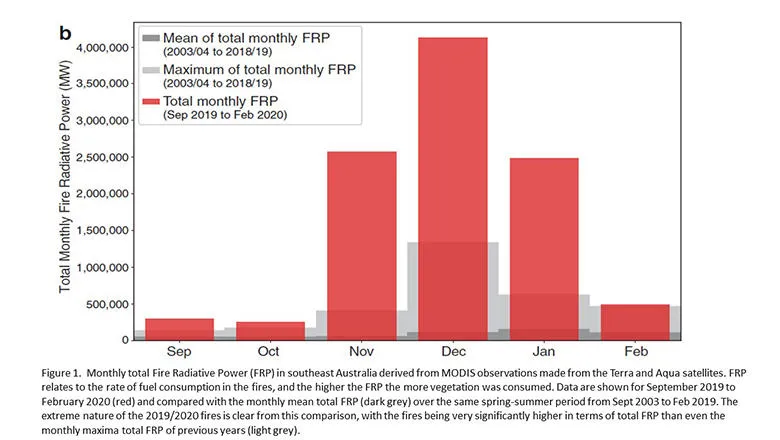Earth Observation from satellites is now able to show us in pretty much real time exactly how fire activity is progressing anywhere on Earth, and how severe current fires are compared to the longer-term record. This capability has never been available before, and this Australian study has exploited this capability to demonstrate just how severe these fires were compared to past events.
Professor Martin Wooster, Chair of Earth Observation Science at King’s and Associate Director of the Leverhulme Centre
22 February 2021
King's researchers contribute to new study that says Australia's 'Black Summer' should be a wake-up call
Satellite data analysis by our researchers revealed the severity of bushfires in Australia during 2019 to 2020 compared to previous years

A new study on Australian wildfires should act as a “wake up call” to the extreme effects of climate change and shows that predications made more than 10 years ago appear to have come true, say researchers.
The study, led by the Australian National University, looked at bushfires which took place during the Black Summer of 2019 to 2020 - and included analysis of satellite data by King’s researchers that demonstrated how much more severe these fires were than in previous years.
The satellite data analysis was conducted by Dr Tianran Zhang and Professor Martin Wooster from King’s Department of Geography, who are also part of NERC's National Centre for Earth Observation and the Leverhulme Centre for Wildfires, Environment & Society, a joint research initiative involving Imperial College London, King’s College London, Royal Holloway and the University of Reading.

The new study, published in the Communications Earth & Environment journal, warns fire disasters like the Black Summer are made worse by human-caused climate change, which together with natural interannual climate variability affects the likelihood and severity of fires multiple ways, some of which are well evidenced but others require more research to fully understand. Together such effects mean that the bushfire problem may well become even more severe in southeast Australia, and the study says that current findings are consistent with decade-old predications that an increase in climate-driven fire risk would be directly observable by 2020.
They conclude the best strategy for limiting further increases in fire risk is through improving methods used to adapt to the now inevitable increase in fire risk in Australia, while also pursuing urgent global climate change mitigation efforts.
Lead author Professor Nerilie Abram from The Australian National University (ANU) said: “2019 was our hottest and driest year on record. This climate set-up created exceptionally dry fuel loads that primed the landscape to burn, and dangerous fire weather that allowed fires to quickly escalate. Our new work highlights the strong evidence that southeast Australia’s climate has shifted, and that this type of fire weather is becoming more frequent, prolonged and severe.”
The team involved in this research also included climate experts from the ARC Centre of Excellence for Climate Extremes and bushfire experts from the NSW Bushfire Risk Management Research Hub.
The new work follows an open letter, released during the height of Australia’s Black Summer fire crisis and signed by more than 400 climate and fire experts from across the world, warning of the ways climate change is increasing bushfire risk in Australia.


